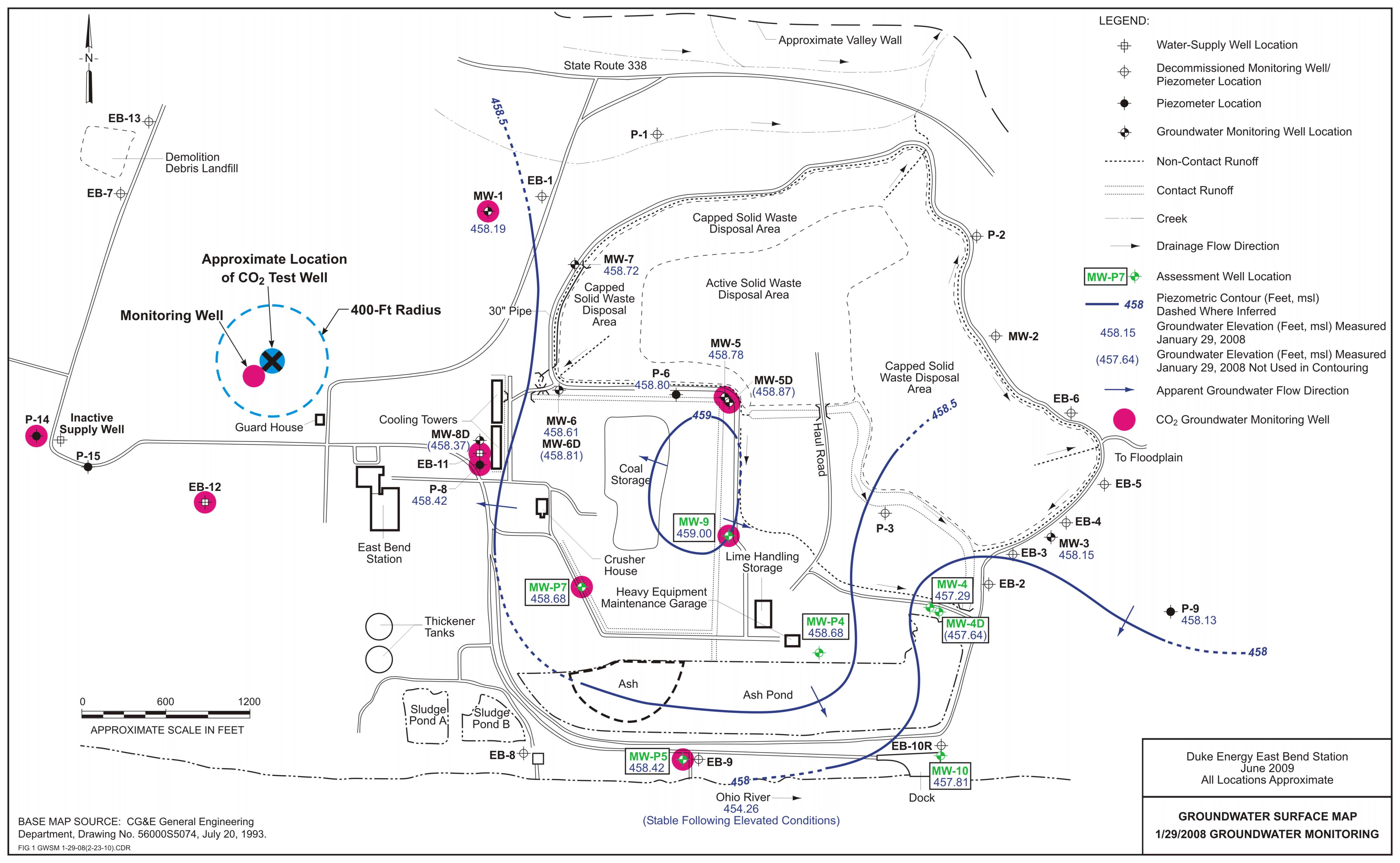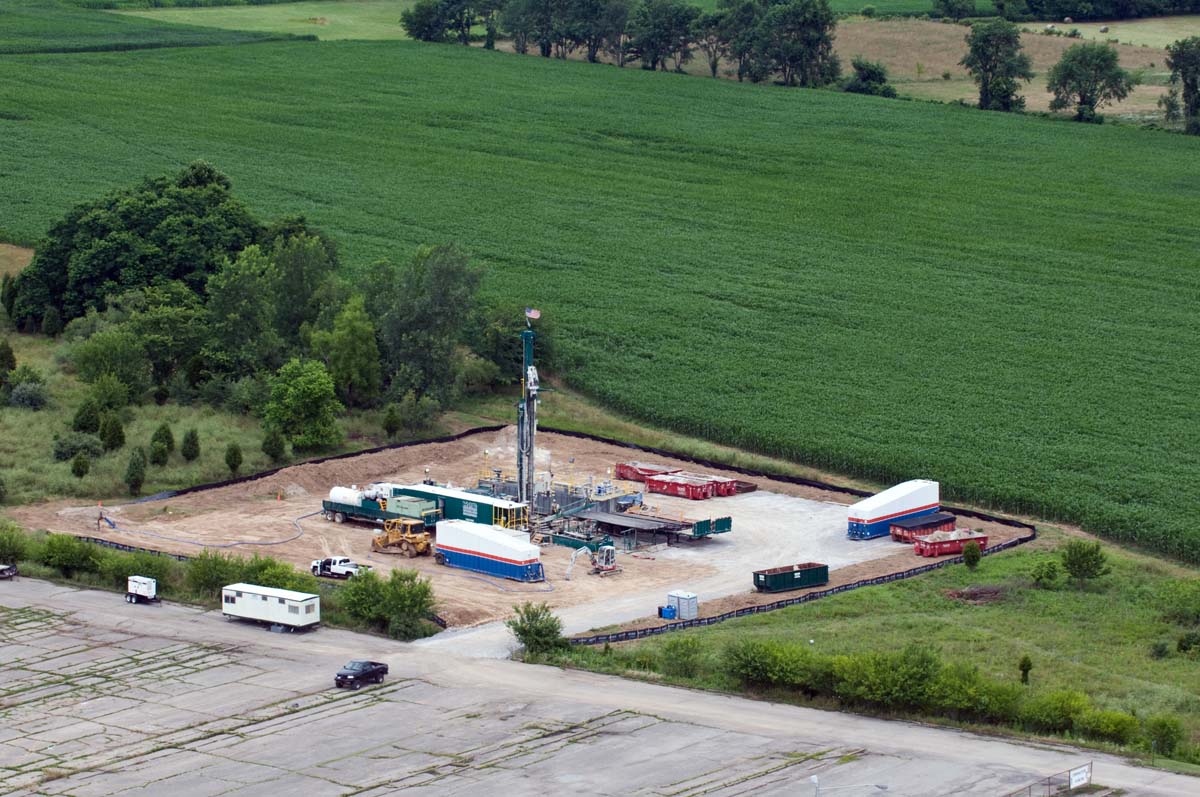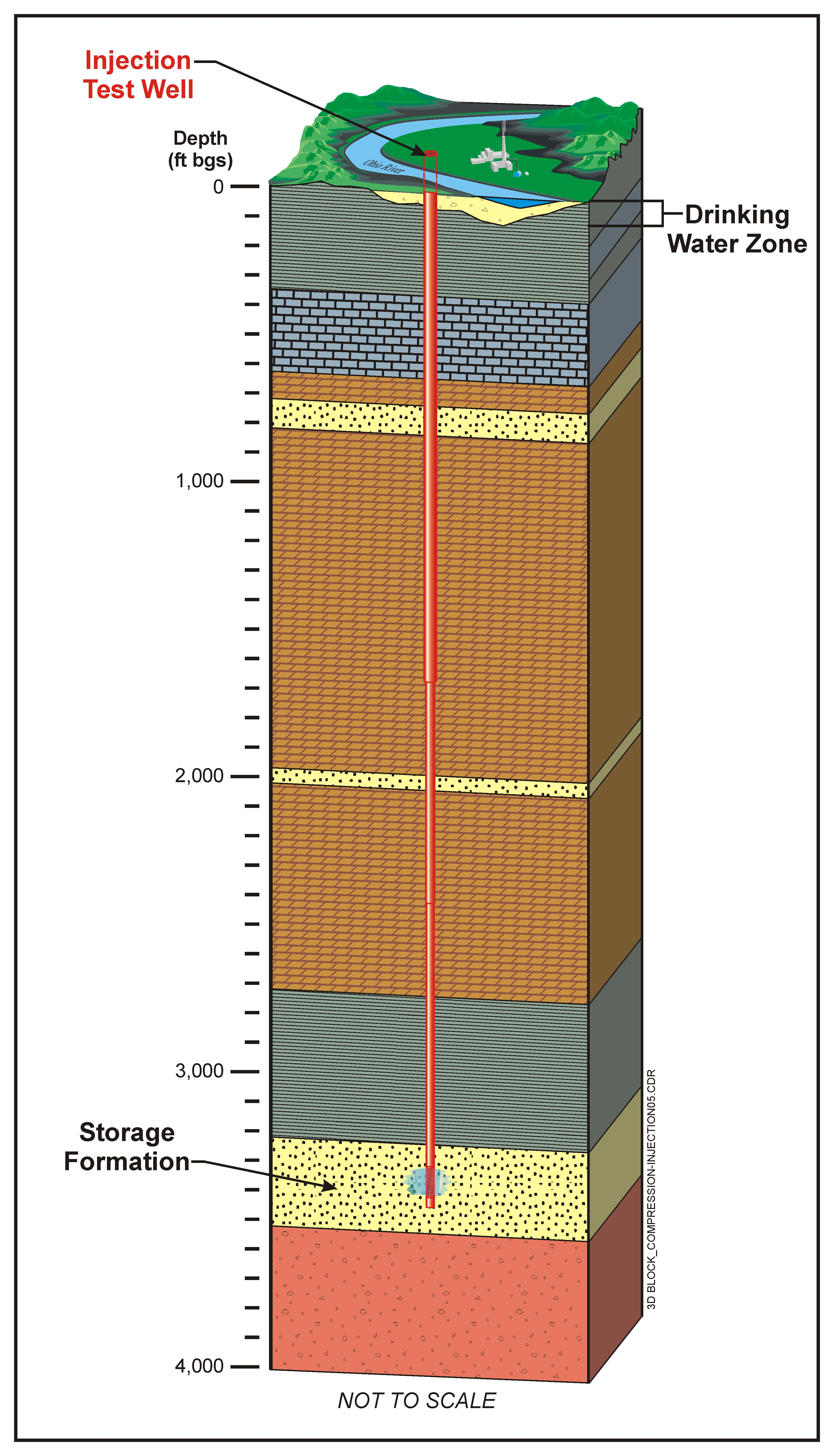Carbon Storage Atlas
- Why This Location
- Main Research Q&As Discovered
- Lessons Learned
- Story of Interest
- Geologic Details
- Links to EDX
- Sites
Site: Cincinnati Arch – Duke Energy’s East Bend Generating Station, Rabbit Hash, Kentucky
Lat/Long
Boone County, Kentucky
Cincinnati Arch East Bend Power Plant: 38.908078, -84.856192
Why this Location?
This site was selected because of the availability of a willing host company with a location above the Mt. Simon Sandstone (the most prominent regional storage interval in the Midwest), and because of the concentration of large, modern coal-fired power plants along the Ohio River.
Main Research Q&As Discovered
The primary objective of the East Bend injection test was to assess carbon dioxide (CO2) storage potential in the Mt. Simon Sandstone. In addition, the test was aimed at providing information to help better understand the regional trends in the Mt. Simon Sandstone as it is present across much of the Midwest as a deep saline reservoir and has been historically used for injection. Wireline logs and whole core were collected and showed the porosity of the Mt. Simon Sandstone has variable porosity between 5 to 15% and permeability between 0 to greater than 100 millidarcies (mD). The Eau Claire Formation exhibits excellent properties for a caprock. Brine injection tests and CO2 injection tests both showed the Mt. Simon Sandstone to have good injection capabilities. A total of 910 metric tons of liquid CO2 was injected over two days at a rate of 5 barrels per minute (1,200 metric tons per day, or 400,000 metric tons per year). A simple two-year monitoring program, mainly based on groundwater monitoring, showed containment of CO2 with no evidence of leakage into shallower zones.
Lessons Learned
The Mt. Simon Sandstone was a very effective CO2 storage zone at the East Bend site. The CO2 was trucked in for the injection test and could not be supplied fast enough to keep up with injection. Consequently, the field crew had to wait for more CO2 to be delivered before finishing the injection test. Conducting a brine injection test prior to injecting CO2 was found to be a useful indicator of the ability of the formation to accept large-scale CO2. In this test, injecting CO2 resulted in much lower bottom-hole pressures than injecting a similar amount of brine. This was the first injection of CO2 into the Mt. Simon Sandstone, which is also the storage zone for large-scale and commercial-scale projects in Illinois.
Story of Interest
The Cincinnati Arch geologic field test site was located at the East Bend Station Power Plant near Rabbit Hash, Kentucky, right on the Ohio River. At the time, the town had elected a three-legged dog as mayor, and a few of the mayor’s relatives would stop by to see the field work. The local residents were curious to see vibro-seis thumper trucks in the area and hoping to get compensated for all the oil and gas production from under their properties. They were pretty disappointed to hear that the seismic survey was not exploring for oil and gas. However, this presented an opportunity for the Midwest Regional Carbon Sequestration Partnership (MRCSP) researchers to explain the carbon capture and storage (CCS) technology.
Geologic Details
The site-specific characterization data showed that the Mt. Simon Sandstone occurs between depths of ~985 and 1,077 meters (3,230 and 3,532 feet) below ground (thickness of ~92 meters [302 feet]) and is overlain by approximately ~ 137 meters (450 feet) of the Eau Claire Formation. The porosity of the Mt. Simon Sandstone determined from wireline logs is primarily 5 to 15%, but intervals with <5% and >15% porosity were also encountered. Permeability based on wireline data calibrated to core data indicates that one-third of the formation is between 0 and 10 millidarcies (mD), one-third is between 10 and 100 mD, and one-third is 100 mD or greater. The Eau Claire Formation exhibits excellent properties for a caprock, including substantial thickness, permeability generally less than 1 mD, and an absence of fractures and faulting that could compromise its sealing ability.







